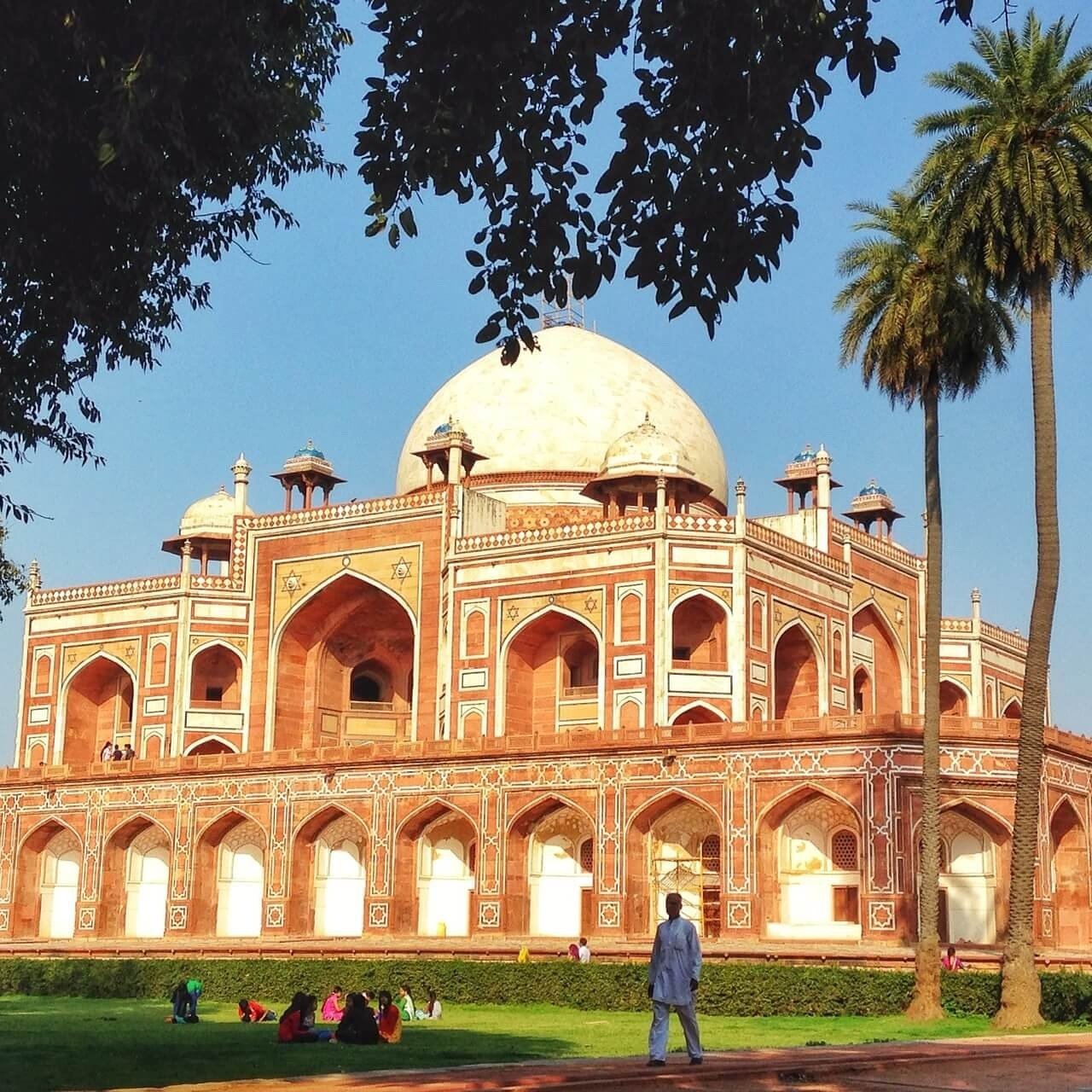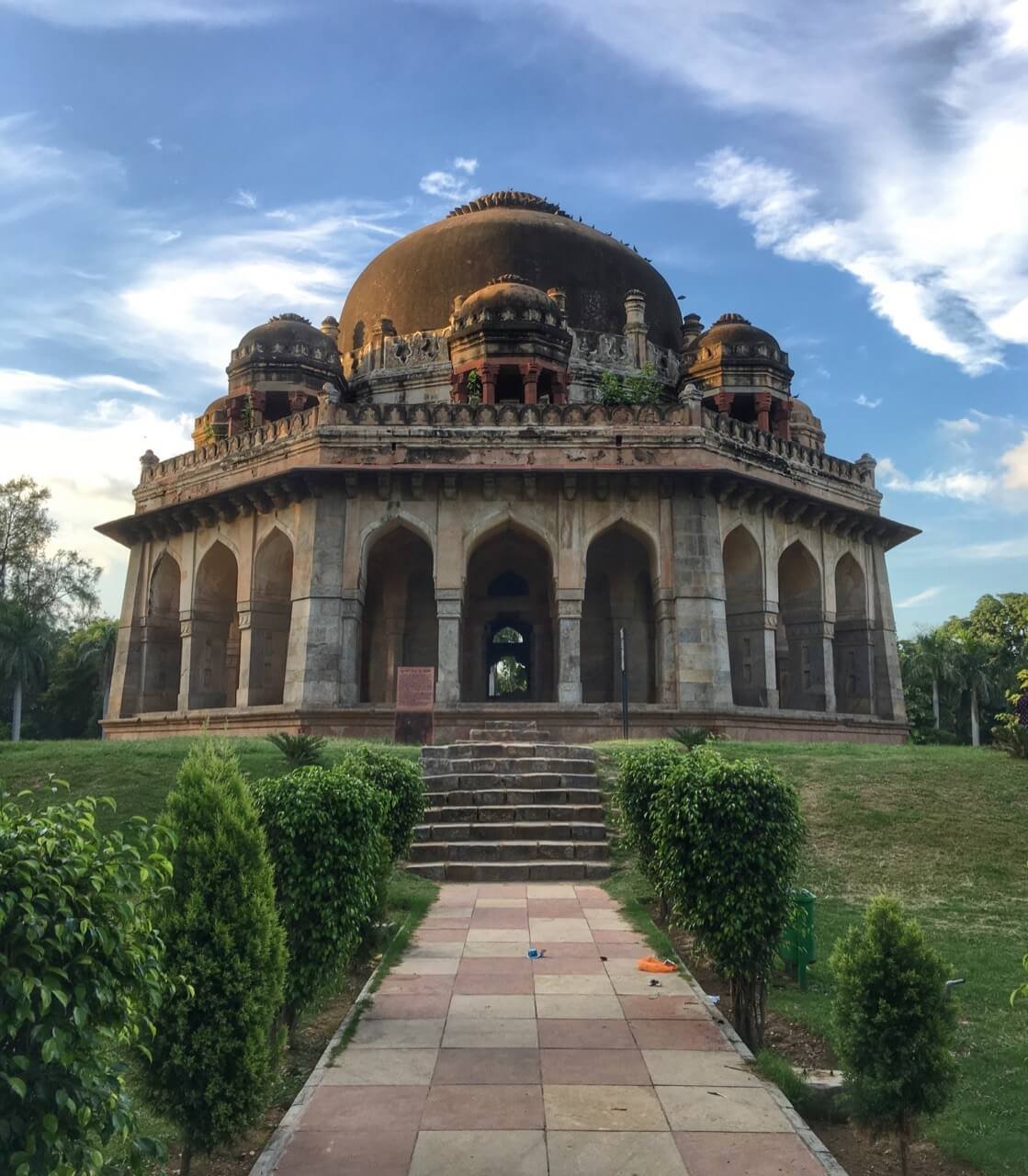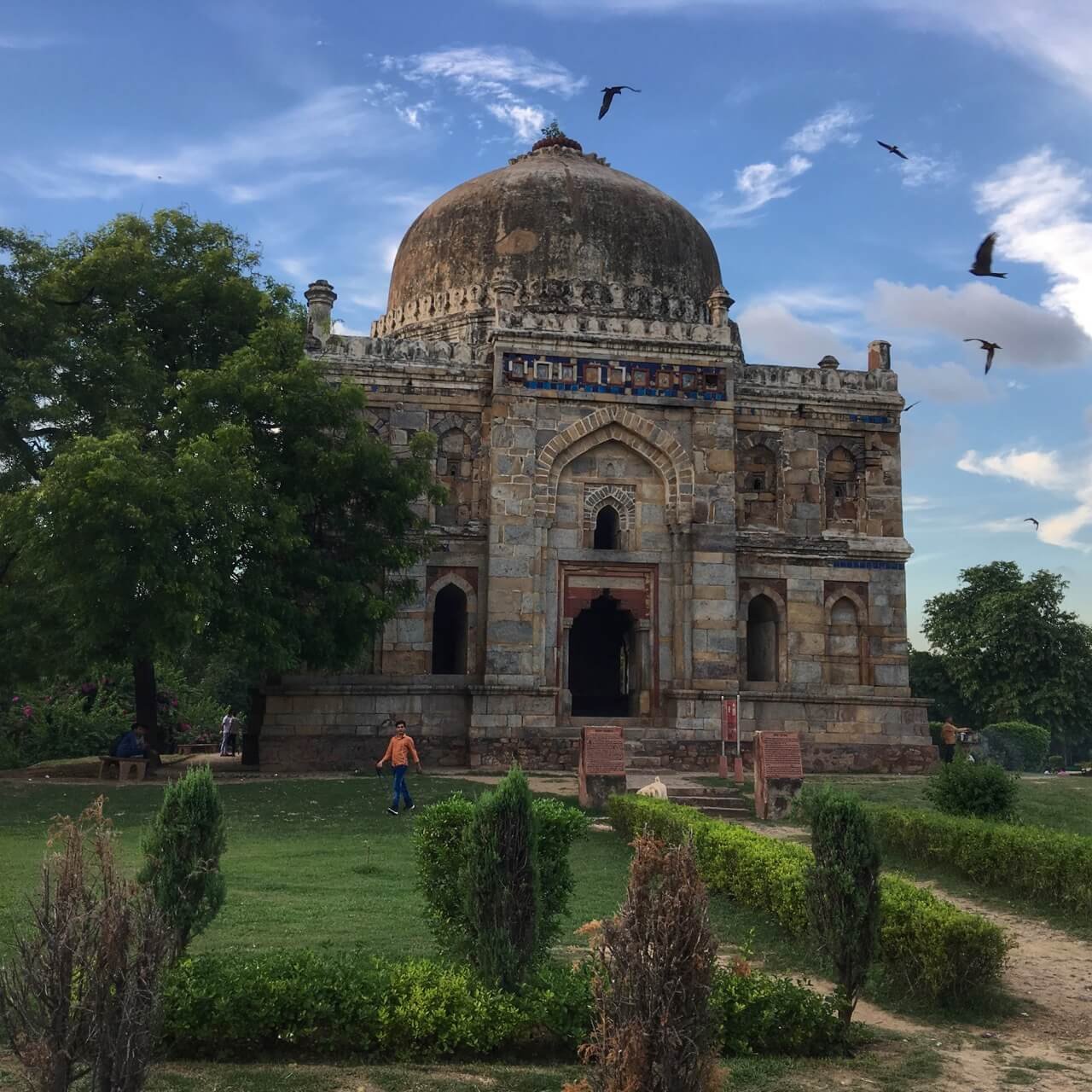What to Do in Delhi, India for History Buffs: Exploring Ancient, Old and New Delhi
Straddling the Yumuna River is the city of Delhi, officially known as the National Capital Territory (NCT) of Delhi. It’s a city that can take a lifetime to explore and understand, but thankfully we’ve got Mariellen Ward, a resident and lover of India’s capital, to walk us through the city’s streets and history.
Humayun’s Tomb. Photo Credit: Mariellen Ward
Delhi, the capital of India, is a booming metropolis of about 20 million (and about 30 million if you include the entire national capital region).
Not only is it one of the five largest cities in the world, it is also one of the most historic. At least seven or eight major empires have built their capital in Delhi – probably more – and each have left behind a trail of forts, palaces, tombs, and other monuments. In light of this, there are many things to do in Delhi, and Delhi also happens to be the food capital of India, too.
Because Delhi is a huge, sprawling city, it’s hard to know how to tackle it as a first time visitor – or even a repeat visitor. So I suggest dividing the city by epochs and tackling it from a historic perspective. The earliest history of Delhi is so old that it’s shrouded in myth, so we will pick up at a time when the empires left behind sites worth seeing.
Exploring Delhi Through Its “Eight Cities”
These epochs are often called the “Seven Cities of Delhi,” but the term does not include the British Raj so it is more accurately the Eight Cities of Delhi.
“The Eight Cities of Delhi” are: Lal Kot or Qila Rai Pithora, Mehrauli, Siri, Tughlakabad, Firozabad, Shergarh, Shahjahanabad, and New Delhi. Some of these cities have disappeared completely, but some have left behind enough remnants to make them tourist attractions. Shahjahanabad (Old Delhi) and New Delhi live on almost intact. In fact, New Delhi has hardly changed since the British left in 1947.
By the way, if you’re wondering why Delhi was the capital of so many empires, its strategic location on the banks of the Yamuna River plays a part.
There’s an old adage that says, “whoever builds a new city in Delhi will lose it.” This prophecy has proved true time and time again, and that makes Delhi an awfully fun place to explore.
Historical Highlights of Delhi, India
Delhi is one of the most historic cities on the planet, and so it makes sense to consider what to do in Delhi based on its layers of history, and how you can leave the capital with a strong understanding of the city and country’s history and, by proxy, perhaps also where it’s headed.
Mehrauli (South Delhi)
Qutab Minar. Photo Credit: Mariellen Ward
From 1206, Delhi became the capital of the Delhi Sultanate, also known as the Slave Dynasty. These rulers were former slaves from Central Asia and they were the first Muslim rulers of Delhi. The first Sultan of Delhi, Qutb-ud-din Aybak, started the construction of the Qutub Minar in Mehrauli. Qutub Minar is one of Delhi’s three UNESCO world heritage sites and serves as an iconic symbol of Delhi. Built in 1192, Qutub Minar is the world’s tallest brick minaret at 72.5 metres. Also within the Qutub complex, you will find the Quwwat-al-Islam (Might of Islam), which is the earliest extant mosque in India.
This complex is a fascinating place to explore, and so is the adjacent Mehrauli Archaeological Park. Spread over 200 acres, Mehrauli Archaeological Park consists of more than 100 historically significant monuments among leafy lawns and gardens. It is the only area in Delhi known for 1,000 years of continuous occupation. There’s a lot of history represented in this area, with relics from at least seven empires – and taking part in a walking tour (either joining a group or self-guided) can bring that all to life.
Hauz Khas (South Delhi)
The Tughlaq dynasty reigned from 1320 - 1413 and left behind forts and monuments in various parts of South Delhi, including the sprawling and dilapidated Tughlaqabad Fort and the Feroze Shah Kotla ruins. However the best Tughlaq dynasty ruins to explore is probably Hauz Khas.
The Hauz Khas complex includes several 14th century ruins including Feroze Shah Kotla’s tomb and an adjoining Madrassa (school for Muslim scholars), both serenely poised on the edge of a man-made lake and surrounded by a trendy “village” and a large park.
Hauz Khas Village is one of the hippest places in Delhi for cool cafes, tattoo parlours, and curio stores. And the large, shady park is ideal for strolling and picnics.
Lodhi Garden (Central Delhi)
Lodhi Garden Tombs #1-2. Photo Credit: Mariellen Ward
The Lodhi Dynasty ruled from 1451 - 1526. It was the fifth and final dynasty of the Delhi Sultanate, founded by Bahlul Khan Lodhi from Afghanistan. Today the Lodhi Dynasty is memorialised by beautiful Lodhi Garden. An oasis of greenery and wide lawns in the centre of Delhi, Lodhi Garden is dotted with the tombs of Lodhi rulers and the Bara Gumbad (built 1490), which features the earliest full dome constructed in Delhi.
At 80 acres, Lodhi Garden is a tranquil place to stroll or picnic, and a respite from the traffic and crowds of Delhi. Within walking distance, you will find the photogenic Safdarjung’s Tomb, dating from 1754. The last enclosed garden tomb in Delhi, Safdarjung’s Tomb, built to house the remains of house a powerful minister in the Mughal court during the reign of Muhammad Shah, represents the last phase of the Mughal style of architecture.
And nearby Khan Market has many cafes and restaurants, to refresh yourself after walking in the park. There’s a ton of great food in Delhi, overall.
Old Delhi (North Delhi)
Shahjahanabad – now known as Old Delhi – is the city that Mughal emperor Shajahan built between 1639 and 1648. If his name seems familiar, it’s because he built the Taj Mahal at Agra, and shifted the Mughal capital from Agra to Delhi. There are a lot of stunning Mughal era places to visit in Delhi, including two of the city’s three UNESCO world heritage sites, Humayun's Tomb (pictured at the top of the article) and Red Fort.
Centre your Shahjahanabad tour on Old Delhi and spend a day taking in the sights and wandering the crowded, narrow lanes of the Old City, taking in the Red Fort, Jama Masjid, and recently renovated Chandni Chowk, which runs through the marketplace of Old Delhi.
Later, get an auto, taxi, or take the metro, to see Humayun’s Tomb (built 1572) in central Delhi. It is a stunning building on a large, leafy green property. A precursor to the Taj Mahal, you will see some of the same architectural elements – though not to the same stunning effect.
Humayun's Tomb Sunder Nursery. Photo Credit: Mariellen Ward
New Delhi (Central Delhi)
In December 1911, at a royal darbar outside the city of Delhi, King George V of Britain – recognizing the symbolic importance of Delhi – declared the capital of the British Raj in India would move from Calcutta to Delhi. About a year later, in 1912, construction on the new capital started south of the city centre.
Plans for New Delhi were extremely ambitious – and very deliberately in stark contrast to crowded Old Delhi. Chief architects Herbert Read and Edwin Lutyens designed a 10-square-mile city based on a straight and diagonal pattern of broad avenues, extensive green spaces, wide vistas, and an enormous number of trees. It took almost 20 years to build and was formally dedicated in 1931.
The main thoroughfare of New Delhi, Raj Path (formerly King’s Way), is a wide, two-mile long “tribute to empire” with Rashtrapati Bhavan (formerly Viceroy's Palace) at one end, Secretariat buildings on either side, and the imposing India Gate in the middle. It’s a grand spectacle and worth driving around to appreciate the vista. (You can see Raj Path in the opening scene of the Richard Attenborough film Gandhi – it was shot on location to replicate Gandhi’s funeral procession.)
New Delhi is the seat of the government in India and there are many architecturally interesting buildings to see, including the Lutyens’ bungalows – large, white art-deco style homes – and Connaught Place. Called CP by locals, Connaught Place is the commercial centre of Delhi. The white, colonnaded concentric circles, lined with stores and restaurants, were inspired by the Royal Crescent in Bath, England.
New Delhi is an altogether impressive, interesting, and fun place to explore. In the story of Delhi, it also holds a unique place – as the prophecy “Whoever builds a new city in Delhi will lose it” came true after only 16 years. The city was officially declared in 1931, and India won her independence from Britain in 1947.
Mariellen Ward is a Canadian travel writer and blogger who publishes the award-winning travel site Breathedreamgo, based on her extensive travels in India, and runs custom tours in India through her company India for Beginners custom tours. She is based in Delhi and would love to show you the city she loves.





